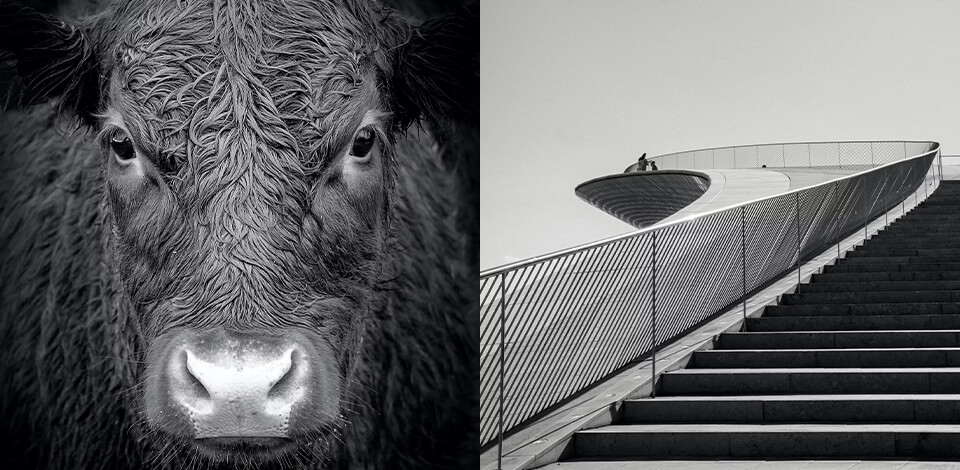
Since they can’t rely on a broad range of colors to draw the viewer's attention, black and white photographers have to emphasize other artistic aspects like framing, depth of field, tonal contrast, dynamic range, shadows, and lighting. While some might treat this as a limitation, in reality, it’s merely an exciting challenge for you to overcome.
Whether you’re an experienced photographer using a pro-grade camera, or an enthusiast taking pictures with your phone, knowing how to recognize and frame beautiful scenery is an essential skill. The following black and white photoshoot ideas will be useful for both portrait and landscape photographers, while the provided tips will come in handy to anyone interested in B&W.
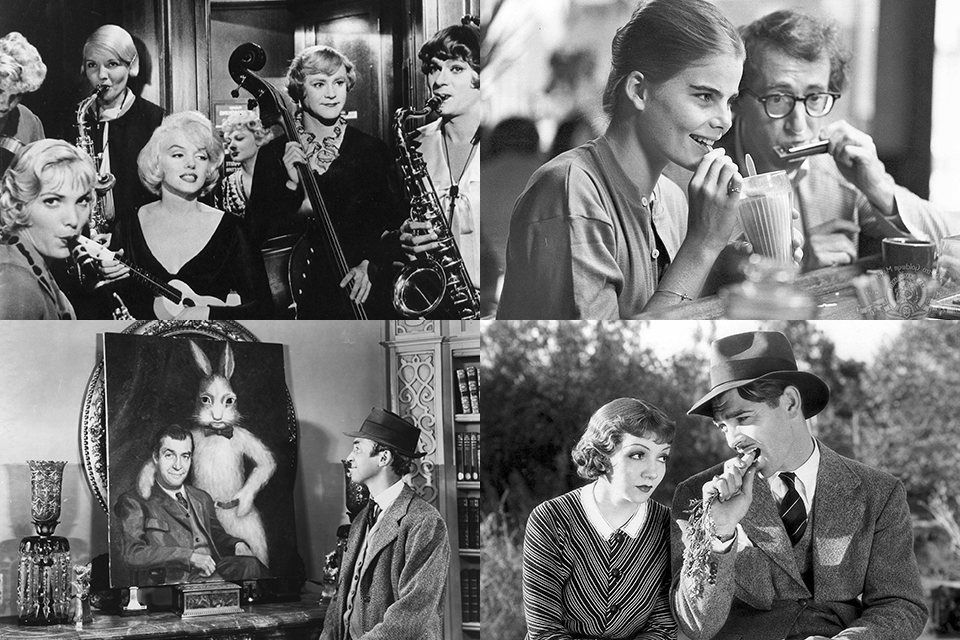
Nothing can get you more inspired than a film shot in black and white. At the time, filmmakers couldn't shoot in color, so, they had to be creative with what they had, i.e. light and shadows.
If you are new to this type of photography, an old movie will be a good way to learn how to use the light and shadow interplay in your images.
I recommend checking out Some Like It Hot (1959), It Happened One Night (1934), Harvey (1950), Manhattan (1979), and Roman Holiday (1953).

The best way to do this is to shoot scenes that have life and motion in them, something that hasn’t been staged or created in a studio. When posting the picture, consider pairing it with an appropriate black and white photo caption that will help you get your message across.
Some photographers believe that all possible pictures were already taken and that there’s “nothing new under the sun.” As such, it can be challenging to come up with new black and white pictures ideas or techniques. The best way to do so is to tell your unique stories and share your vision of the world. Come up with a message or narrative that resonates with you.
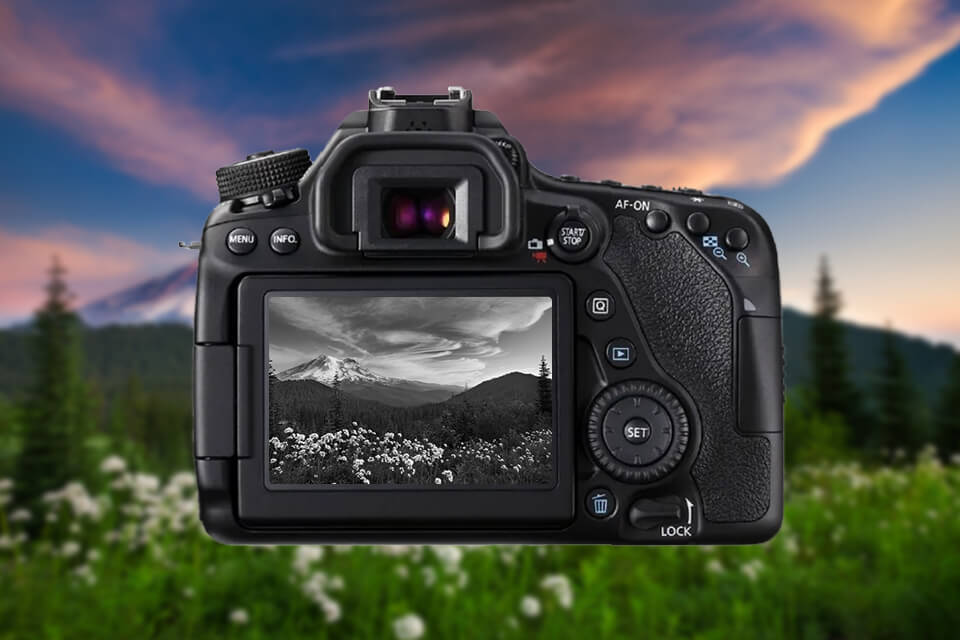
If you’re planning to take photos for both B&W and color before choosing the preferred option during the image editing stage, your pictures will be compromised.
Taking photos in black and white requires you to prioritize different aspects than color photography. If you want to ensure your black and white pictures look professional and eye-catching, you need to emphasize contrast, and shadows, while looking for opportunities to implement various abstract photography ideas.
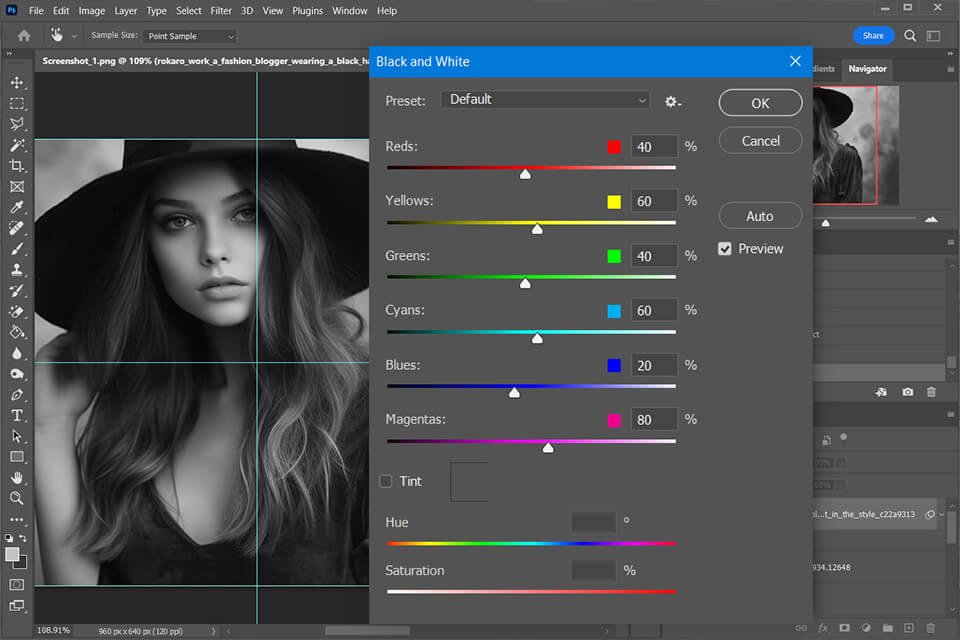
Enhancing black and white photos requires a lot more than just tweaking the contrast, shadows, and highlights. While the pictures themselves don’t have hues, the color settings affect the different tones in your photo.
Once you’re done with your black and white photo shoot and get to editing, you need to tweak the parameters of your pictures in the following sequence: midtones, black and white points, shadows and highlights, and individual tones.
Apply the curve layer and then navigate the graph while evaluating the introduced edits. Don’t like the result? Consider lowering the layer’s opacity or removing it entirely.
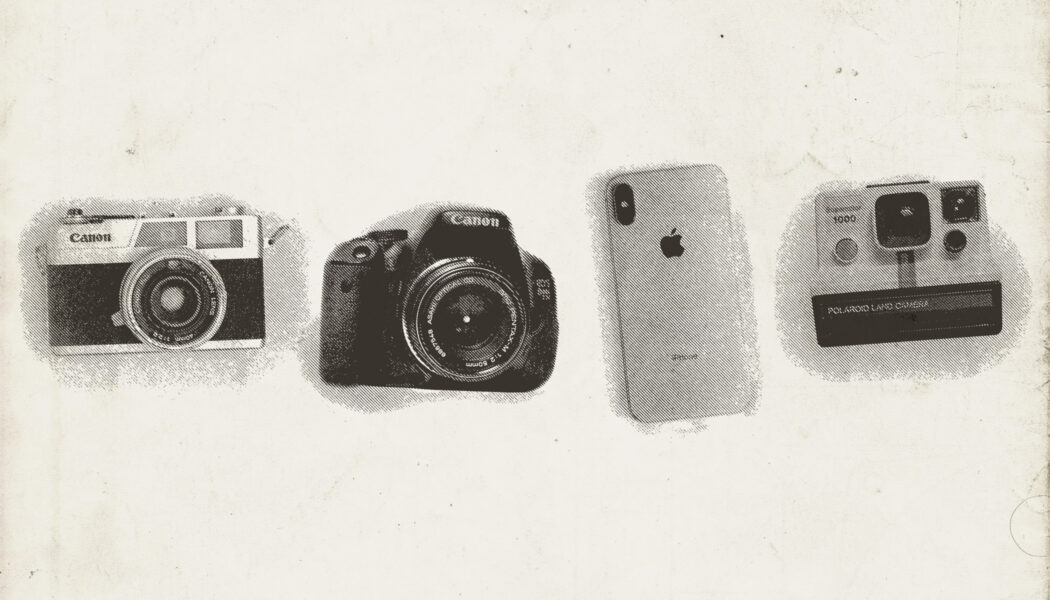
Regardless of whether you’ve decided to use a digital or film camera, you need to understand all the essential technical aspects of your gear. Once you completely master the process of controlling your camera and chosen editing software, receiving the results you need will become a lot simpler.
For amateurs and enthusiasts, figuring out the correlation between the aperture, shutter speed, and depth of field can already do wonders for improving the quality of their photos. Discover how prioritizing lighting, dynamic range, and composition can help further develop your photographer skillset.

Lighting is a cornerstone aspect of all types of photography, and it’s particularly crucial for most white and black photo shoot ideas. If you’re taking pictures of a model against a black backdrop, for instance, there’s a variety of helpful black background lighting techniques that you can take advantage of.
If you don’t own a black photography background, consider using a regular black sheet instead.
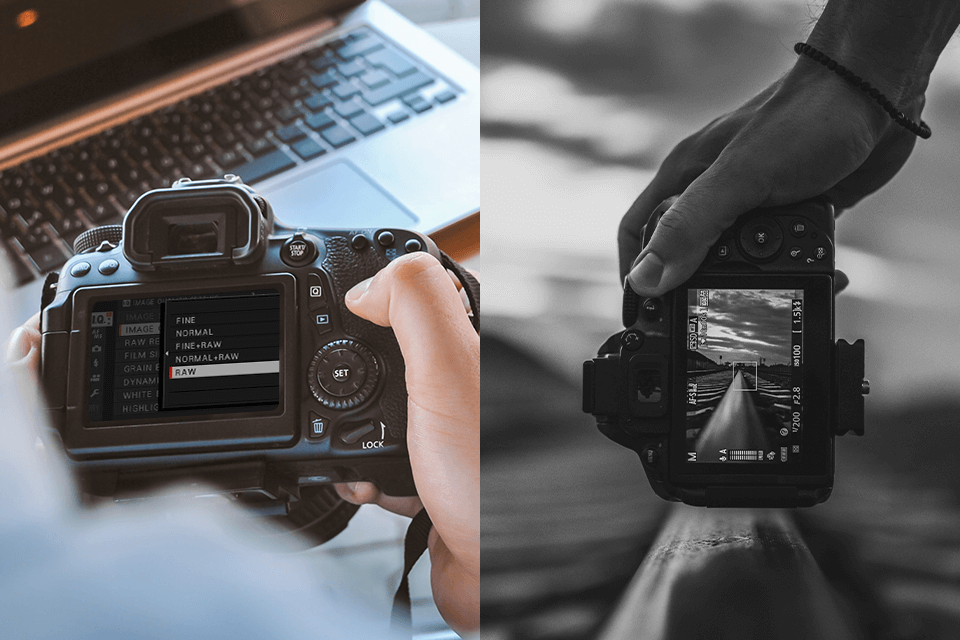
If you would still like to take photos in color with the option of making them B&W afterward, I suggest using the RAW shooting mode to get optimal tonal results. This way, you’ll be able to freely adjust your images during the editing stage even after making them black and white.
Moreover, taking pictures in RAW format also allows you to prevent banding in photography, which is more evident in B&W.
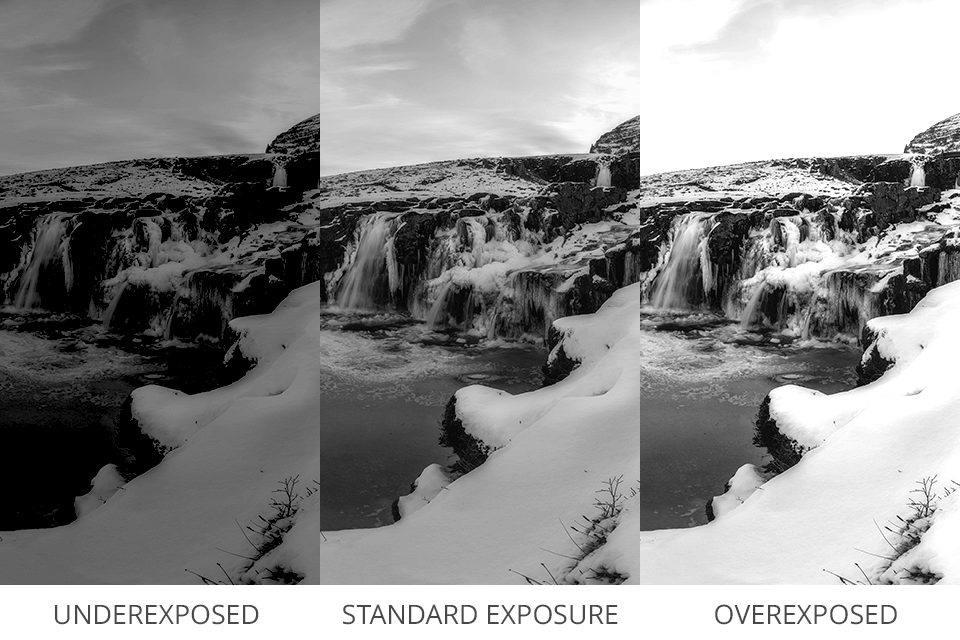
Black and white photoshoot ideas allow you to experiment with both the subject matter and the way you approach photography in general.
Try out different combinations when tinkering with the exposure triangle (aperture, ISO, and shutter speed), and you’re bound to receive interesting and creative results. For instance, a bit of overexposure might highlight the contrast in your image in an appealing way.

An efficient method for increasing clarity is to create a strong contrast in photography between darkness and light. As long as you make the necessary preparations, achieving such a contrast for your black and white shots won’t require a lot of effort.
When enhancing your photos, feel free to boost the blacks and contrast without stressing over how the model’s skin will look in B&W. As such, you’ll be able to produce dynamic, eye-catching photos without any sacrifices.
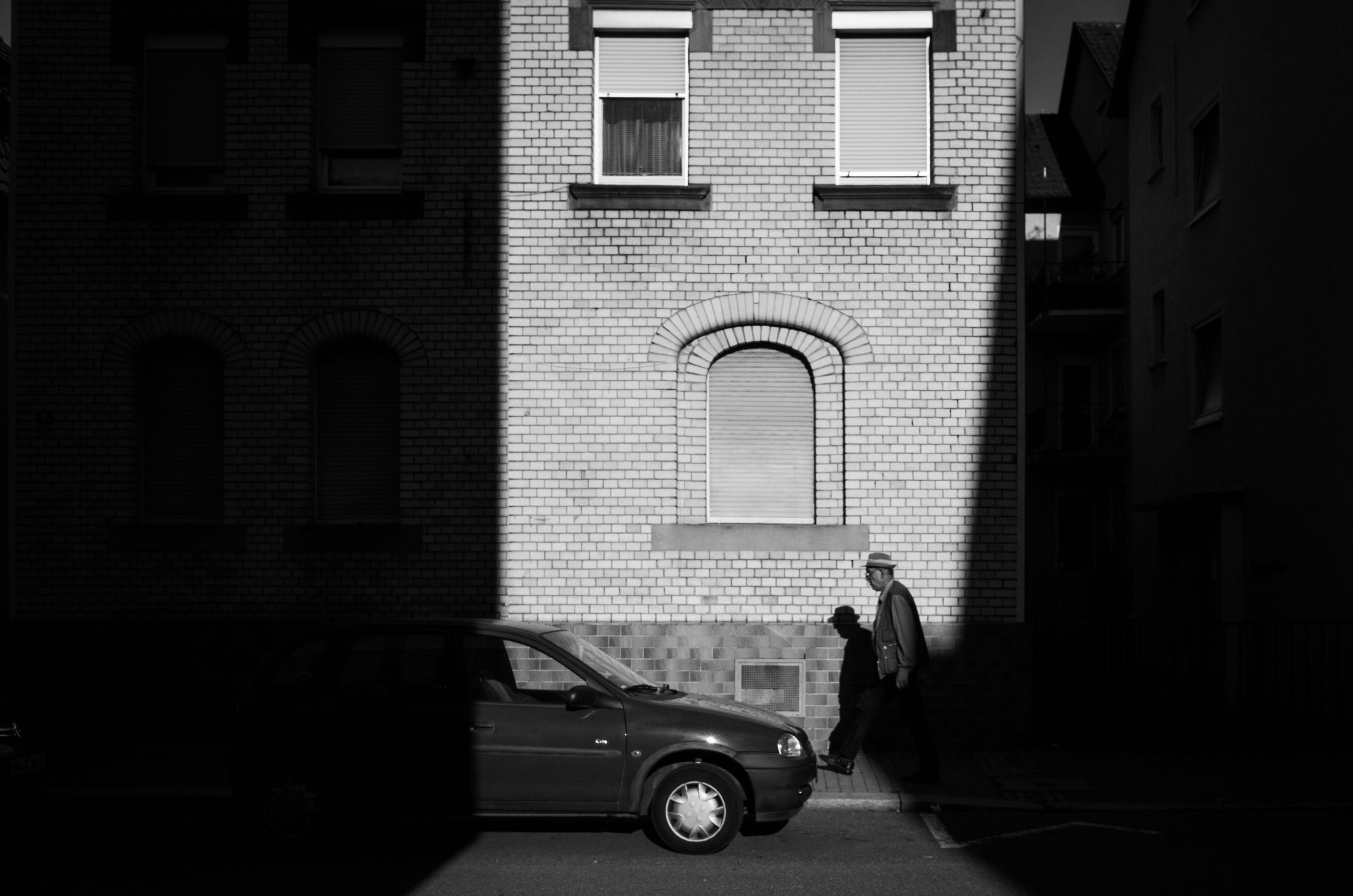
Some negative space in a photo draws the viewers' attention to the story itself. You can simply hide a part of the picture in the shadows. This way, the viewer will be able to focus on what is important but at the same time imagine what could be lurking in the dark.
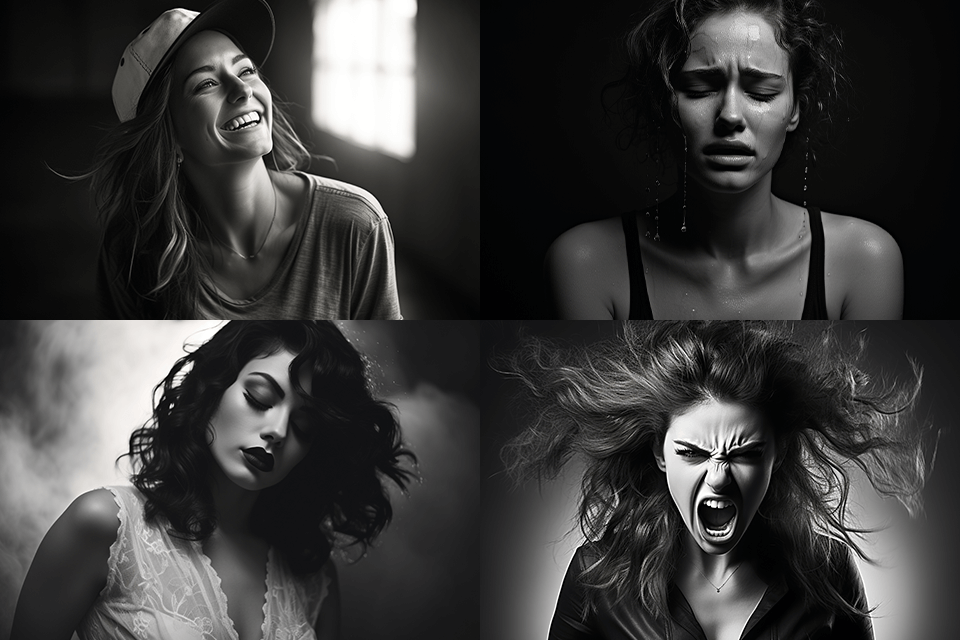
Similar to the eyes, other facial features can appear more pronounced in black and white. You can take advantage of that fact by using your work to convey different feelings.
Even a subtle shift in the model’s expression can drastically change the feel of a photo. Details like a raised eyebrow, an elevated mouth corner, or cheek dimples can dramatically affect a portrait photography pose.
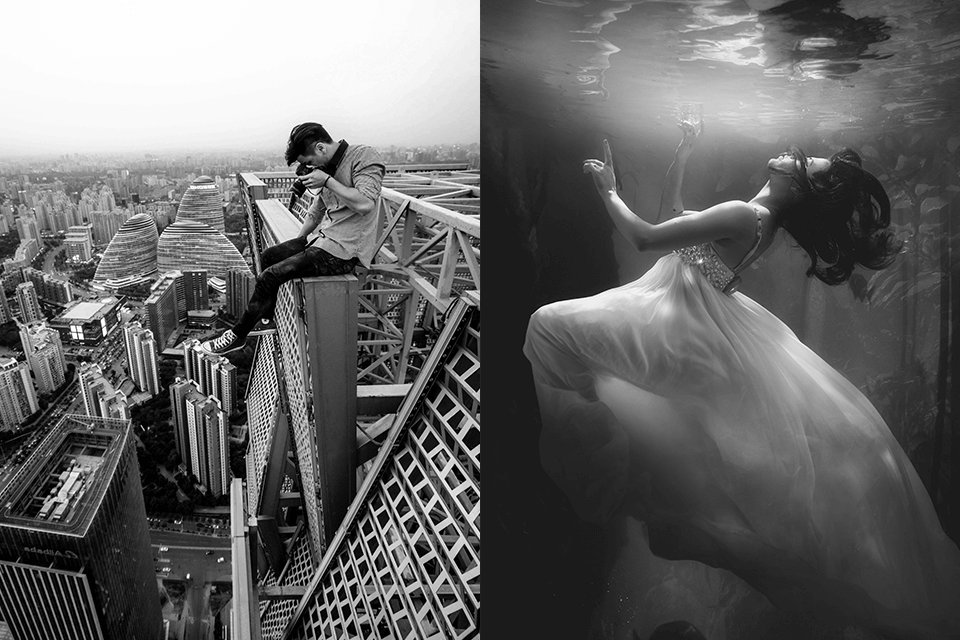
If you decide to take portrait photos outdoors, you need to consider a couple of aspects. Some good options include brick walls or walls with other interesting textures.
If you’d like to include the backdrop in your photo, have the model stand against the wall. If not, have them stand away from it. Another interesting option is to take photos underwater since such black and white photoshoot ideas allow you to avoid worrying over proper white balance and color correction.
Even though most subjects can look great in B&W, some options make it easier to achieve fantastic results. If you’re still new to this genre, consider beginning with simple subjects before moving on to more complex ones. As you develop your skillset, you’ll soon have no trouble approaching any subject regardless of how challenging it is.
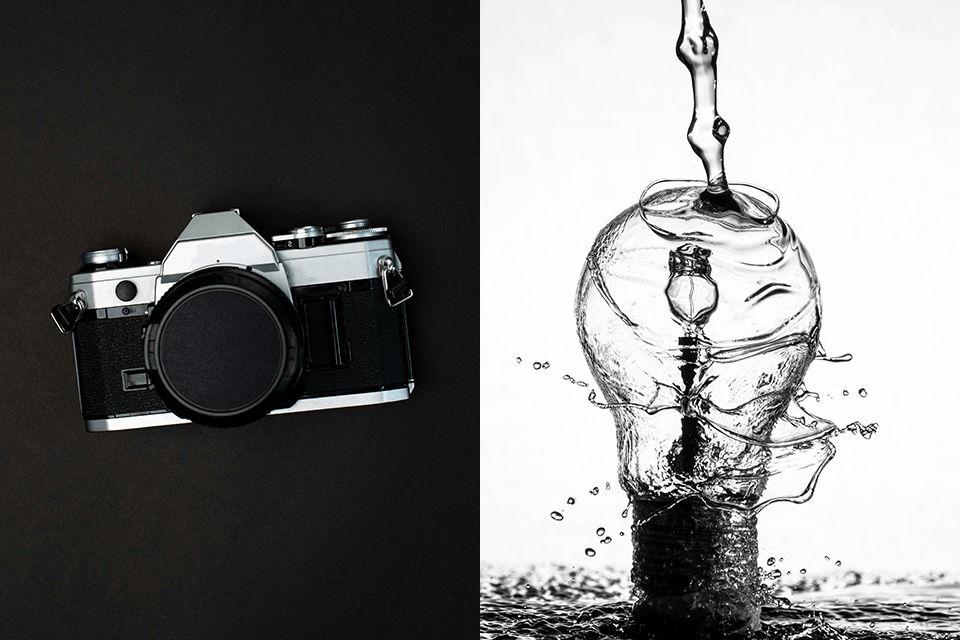
One difficulty that some black and white photographers face is having to envision how the subject will look in monochrome. As such, it’s recommended to start with white and black photoshoot ideas that feature a strong dark/light contrast.
Pick either a light or a dark backdrop for the shoot and then settle on a subject of the opposite tone, and you’re bound to receive a beautiful, eye-catching black and white picture.
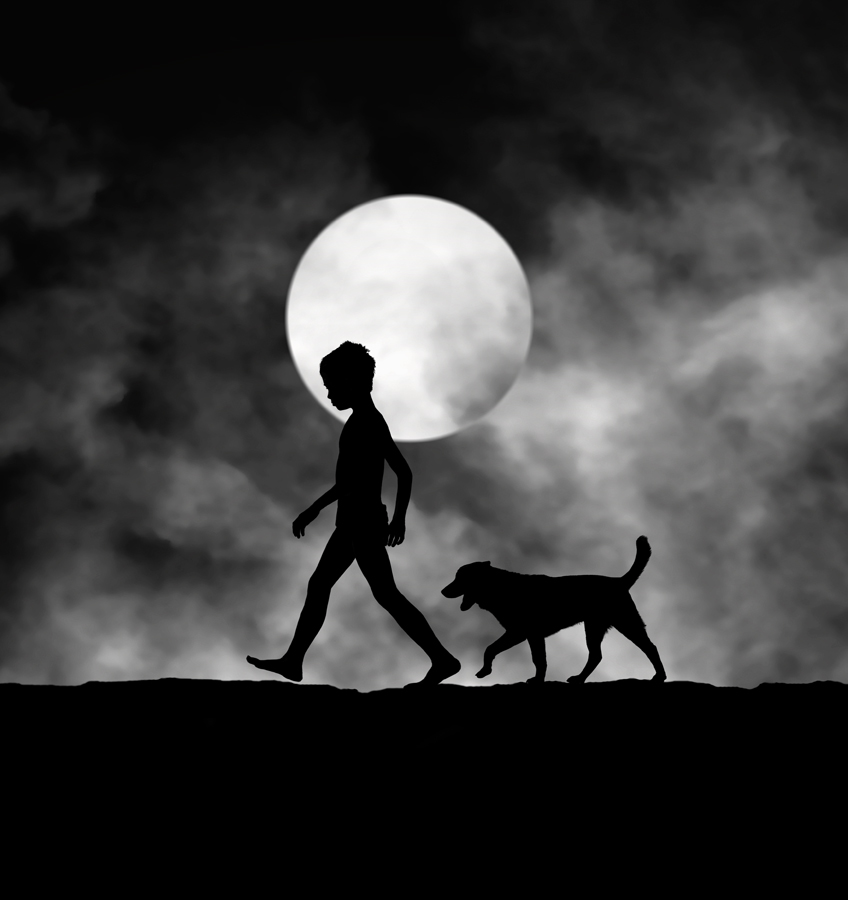
Silhouettes can be invaluable when mastering the art of imagining subjects in black and white. This is because colors become far less important when your attention is focused on a silhouette. To take a silhouette monochrome photo, you need to take photos of the model against a light source.
Pro Tip: A great time for taking photographs like this is late in the afternoon when the sun is quite low and you can take backlit portraits without any problems.

Taking a portrait photo with sun rays in the background allows you to achieve terrific silhouette photography results. However, even if the picture doesn’t feature a silhouette, sunbeams still look incredible in B&W photos because of how eye-catching and striking they are in black and white compared to regular color photography.
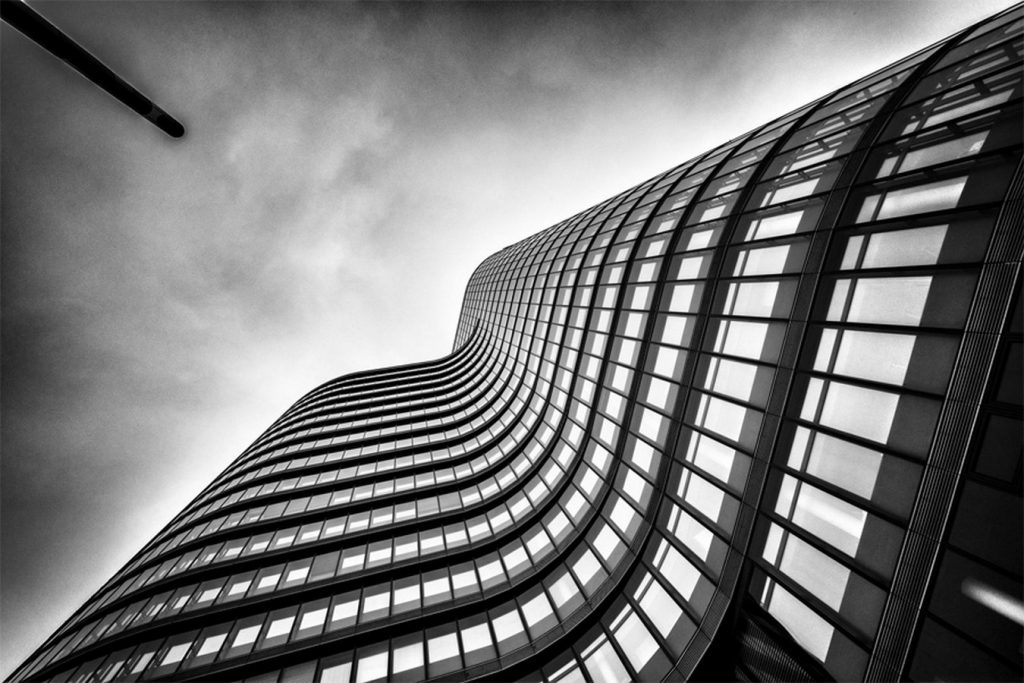
Architecture like skyscrapers are usually a good fit for black and white photos since they offer artistic patterns, textures, and shapes that are emphasized without color. It’s also easy to take a photo of a building against the sky, which is a great backdrop for most B&W pictures.
Additionally, taking pictures of buildings with well-defined shapes can help master the skill of ignoring color when engaging in B&W photography. After some time, you’ll learn how to look past color and tackle architecture photography as well as more complex subjects without worry.


Vibrant colors can be very dominating and even take away the attention from an interesting subject like a pattern. If you’d like to get rid of such a distraction and emphasize a pattern, switch your camera to black and white mode to ensure the viewer is focused on the subject and not the colors.
We can find patterns for black and white photo ideas literally everywhere around us (trees in a park, a row of windows, cars in the parking lot, etc.).
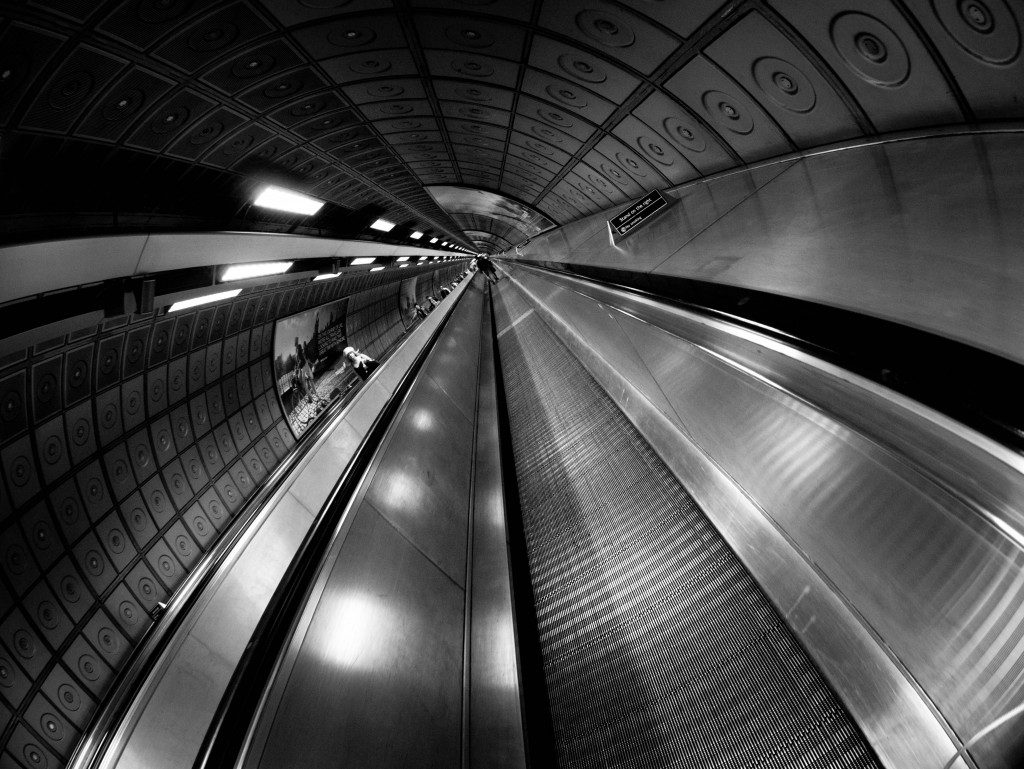
If a road or pathway lies towards the horizon, it appears smaller and smaller before disappearing completely. The point of “disappearance” is referred to as the vanishing point, which can be a useful composition technique that is equally as well suited for B&W photography as it is for color pictures.
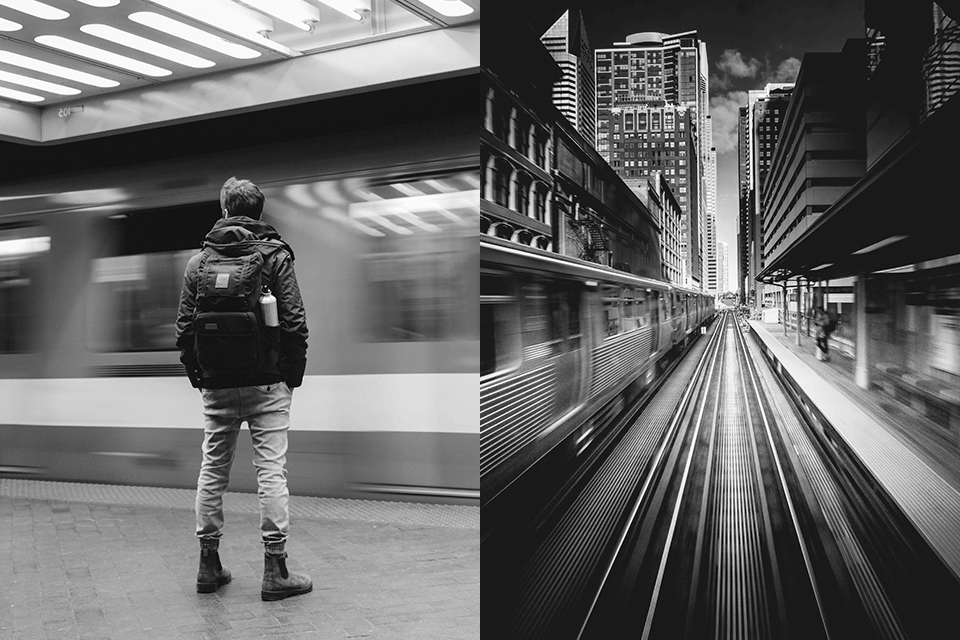
Motion blur can be very useful for conveying action and motion in a photo. That’s why you can commonly find a lot of pictures utilizing this technique in any black and white portrait gallery.
You can blur either the backdrop or the model. If you want to add blur to the subject, make sure the background isn’t more interesting than the subject since then it would distract the viewer’s attention from the main point of interest.

Landscape photography can be challenging when taking pictures in B&W since scenery usually looks better in color. That said, if you’ve chosen a misty or foggy environment, then it might actually look more captivating and defined in black and white.
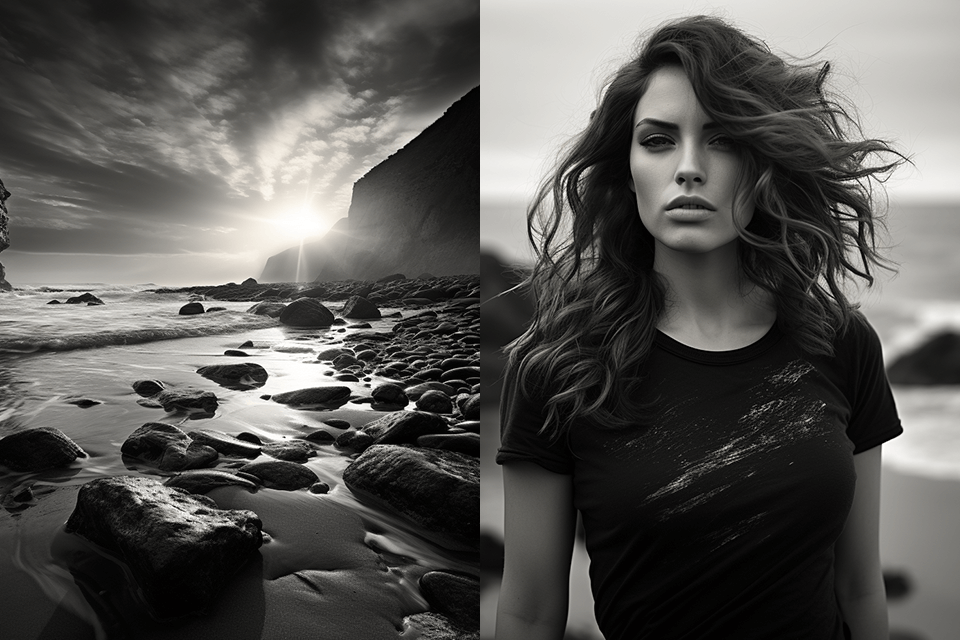
Beaches are the perfect destination for creative black and white portrait photography since they often look bland without color. Their blandness can be beneficial when taking portrait photos. The monotone nature of the sky, sand, and sea allows them to look pretty while still directing all of the viewer’s attention to the model.
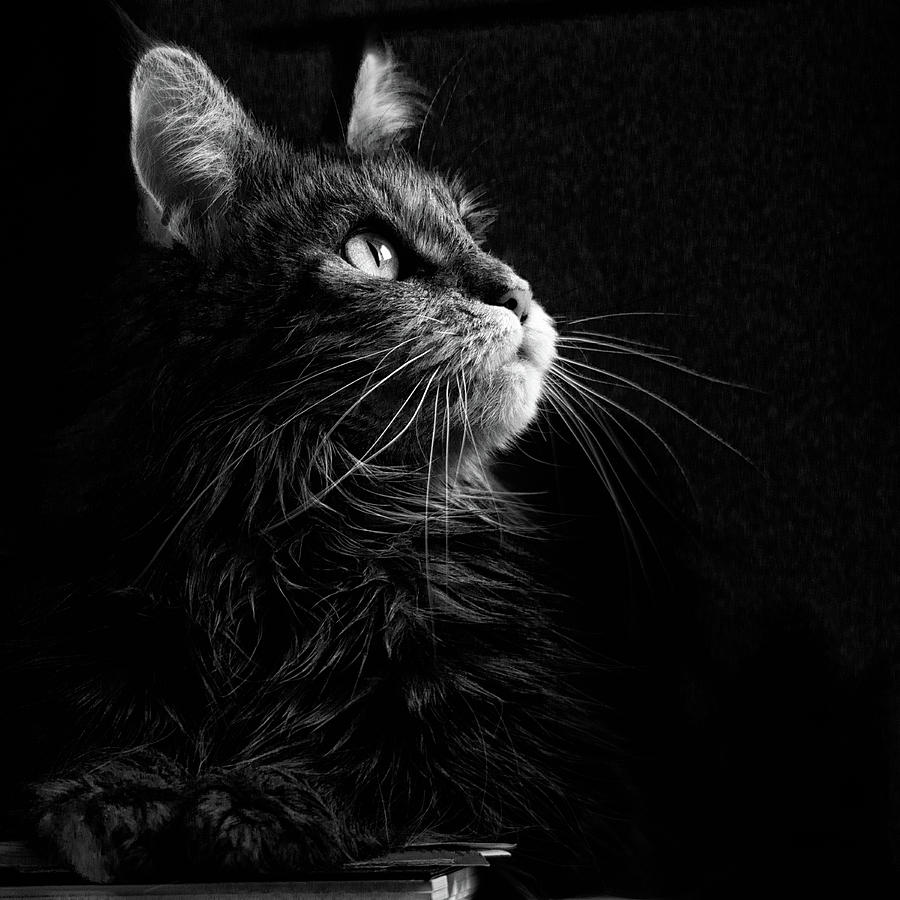
Many animals have neutral-toned fur that matches the surrounding environment. While such coloring is useful for surviving in the wild, it makes a photographer’s life harder. To ensure animals stand out more in your pictures, consider setting the camera mode to black and white since it makes their fur color irrelevant.
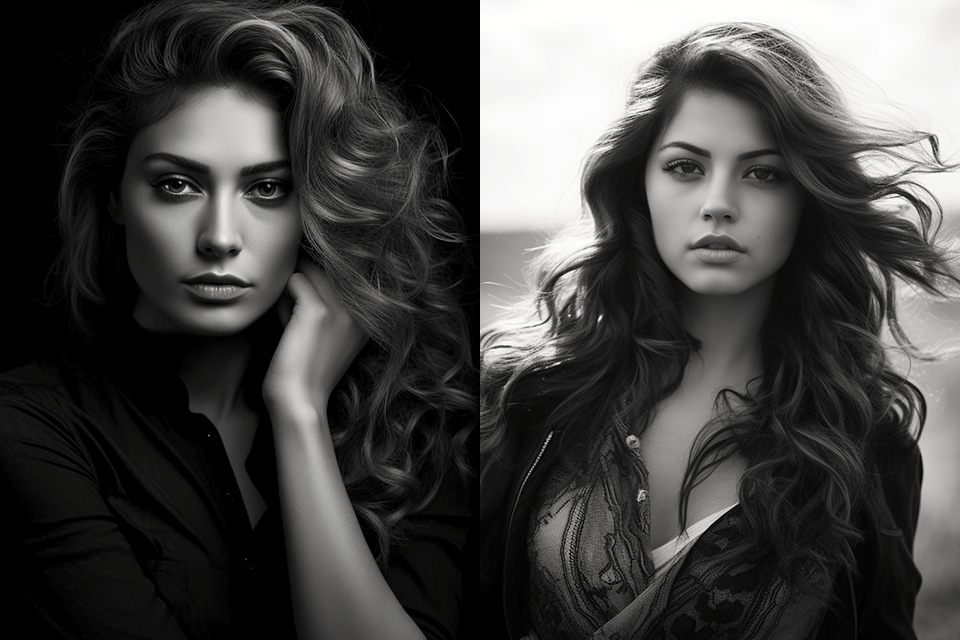
Portrait photography can look great both with and without color. The choice between the two options should primarily come down to what you’d like the viewer to feel or think. Typically, color portraits emphasize fashion or the general appearance of the model. Meanwhile, black and white photos usually focus more on the emotions and facial features of the subject.